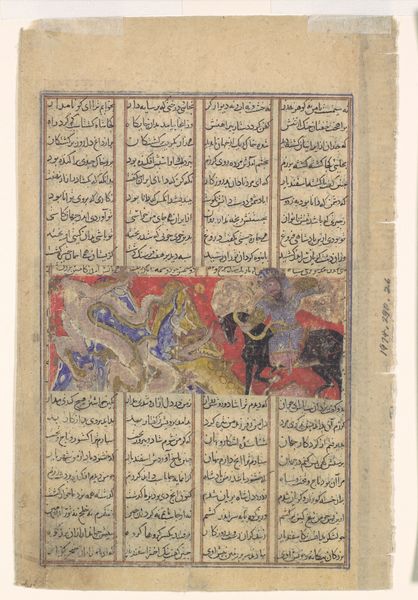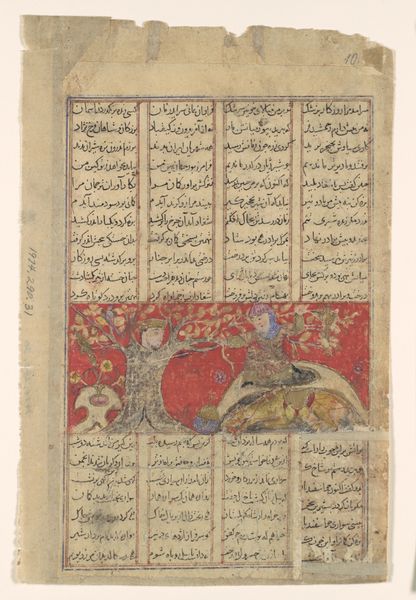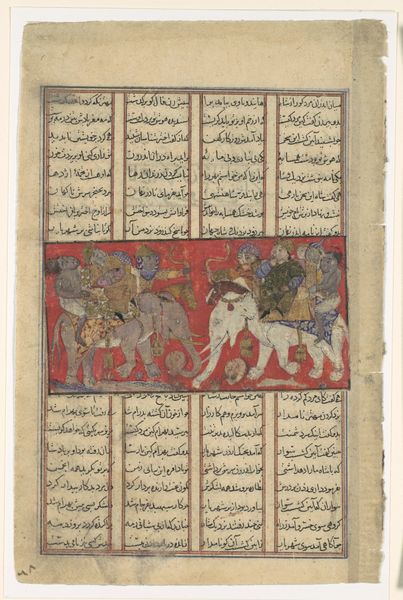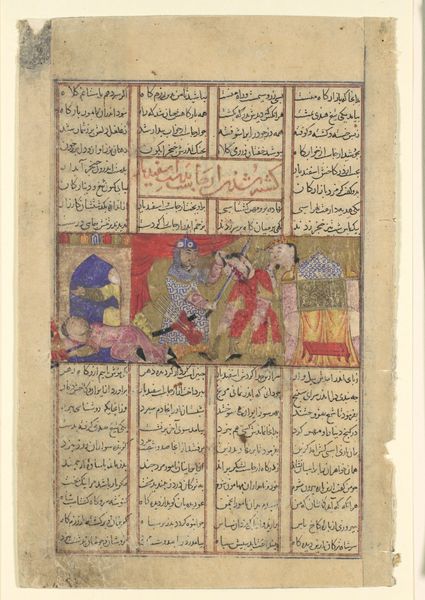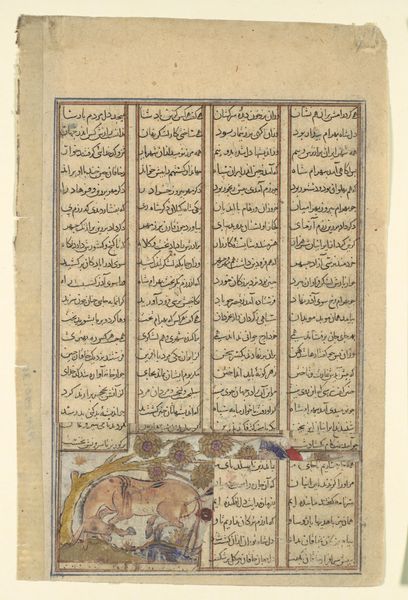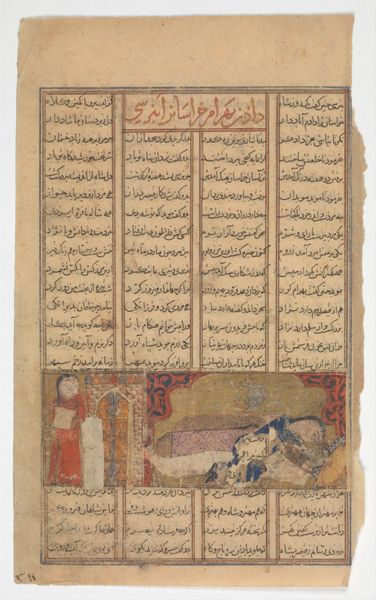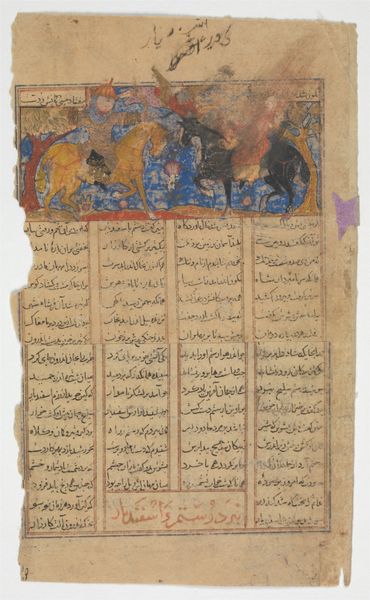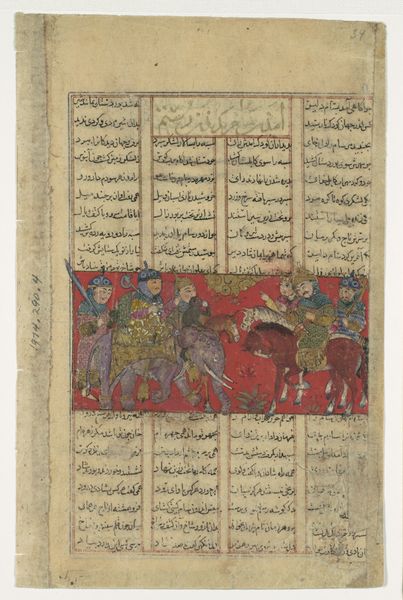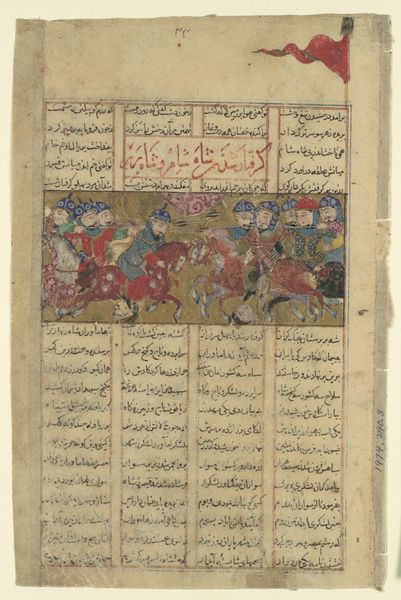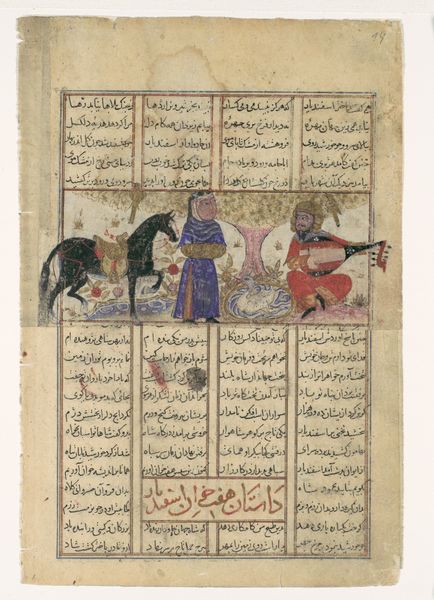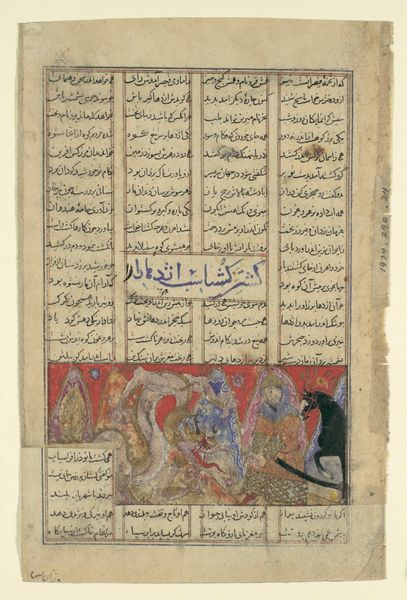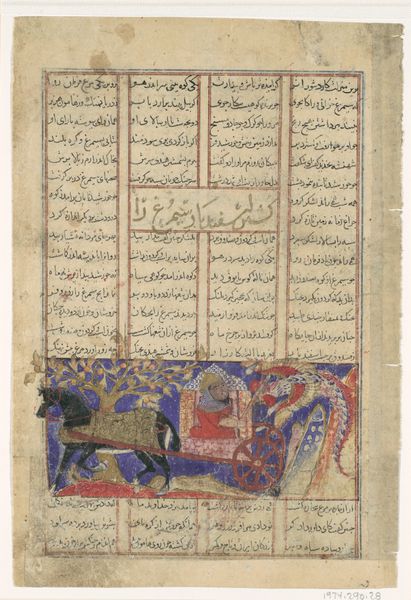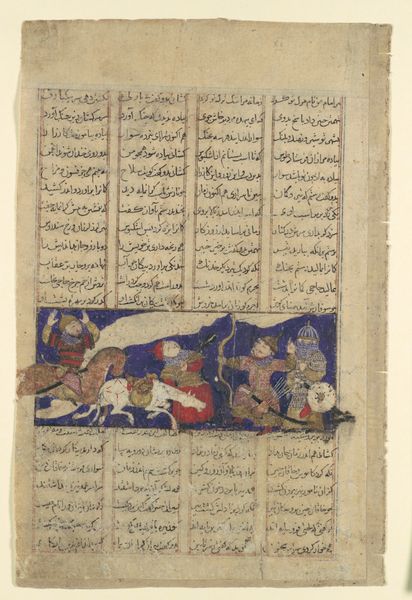
"Isfandiyar's Second Course: He Slays the Lions", Folio from a Shahnama (Book of Kings) 1305 - 1365
0:00
0:00
tempera, painting
#
narrative-art
#
tempera
#
painting
#
landscape
#
figuration
#
coloured pencil
#
horse
#
men
#
islamic-art
#
miniature
Dimensions: Page: H. 8 1/8 in. (20.6 cm) W. 5 1/4 in. (13.4 cm) Painting: H. 1 7/8 in. (4.8 cm) W. 4 5/16 in. (4.8 x 10.9 cm)
Copyright: Public Domain
Editor: Let's turn to "Isfandiyar's Second Course: He Slays the Lions," a folio from the Shahnama, dating from 1305 to 1365. It's currently housed in the Metropolitan Museum of Art. Made using tempera, this piece seems incredibly dynamic and visually packed. What do you see in this work? Curator: From a formalist perspective, the arrangement of elements and the interplay of colors are particularly striking. The dense text frames the central image, creating a structured contrast between the narrative and the visual. Note how the composition within the image is carefully balanced: the horses and lions mirrored in the left and right foreground. How does that strike you? Editor: It feels very intentional, like a stage almost. Are you drawn to particular elements in the way it's constructed? Curator: Indeed. Observe the chromatic choices. The limited palette of earthy reds, blues, and ochres gives unity to the scene. Consider how the artist uses color to differentiate form and narrative purpose. Also the line work itself: see the highly controlled lines. Editor: So you are seeing the artistic techniques that convey visual balance and artistic control. I am curious now. How does the materiality, such as the tempera, impact our interpretation? Curator: The tempera lends itself to fine details and the use of opaque colors, giving the figures a somewhat flattened, symbolic quality. The texture contributes to the artwork’s overall effect, setting this piece within a distinct artistic and cultural period. And also the spatial perspective. What is created or not created adds to the intentional artistic nature of the image. Editor: I never considered it in terms of pure structure. Now I see the details that create a beautiful piece. Curator: Seeing an artwork through such lenses can enrich our understanding of cultural values.
Comments
No comments
Be the first to comment and join the conversation on the ultimate creative platform.
